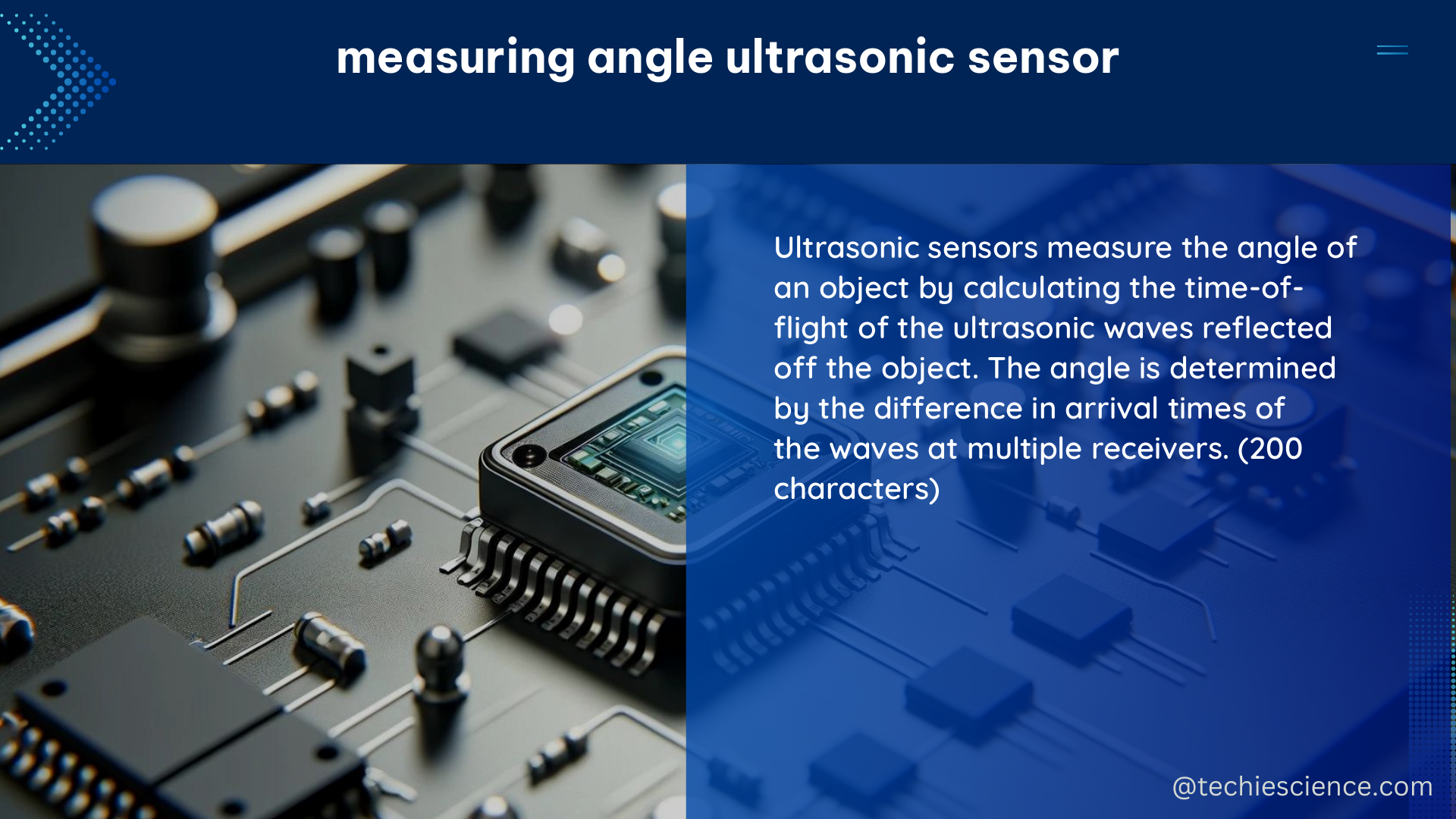Ultrasonic sensors have become an integral part of various applications, from distance measurement and level sensing to object detection. Among these, measuring angle ultrasonic sensors play a crucial role in ensuring accurate and reliable data. This comprehensive guide will delve into the technical specifications, best practices, and advanced techniques for mastering the art of measuring angle ultrasonic sensors.
Understanding the Key Specifications of Measuring Angle Ultrasonic Sensors
Measuring Range
The measuring range of an ultrasonic sensor is a critical specification that defines the maximum and minimum distances the sensor can accurately measure. For instance, the UMP3 fluid level measuring sensor has a measurement range of 40 mm, allowing it to detect distances within this range with high precision.
Resolution
The resolution of a measuring angle ultrasonic sensor indicates the smallest change in distance that the sensor can detect. The UMP3 sensor, for example, boasts a resolution of 0.1 μm (0.0001 mm), enabling it to capture even the most minute variations in distance.
Long-term Stability
Long-term stability is a crucial specification that reflects the sensor’s ability to maintain its calibration and accuracy over time. The UMP3 sensor has a long-term stability of 5.0 μm (0.005 mm) over one year, ensuring reliable and consistent measurements.
Operating Temperature Range
The operating temperature range of a measuring angle ultrasonic sensor is essential for its performance in various environmental conditions. The UMP3 sensor, for instance, can operate within a wide temperature range of -20 °C to +50 °C, making it suitable for a diverse array of applications.
Optimizing Sensor Placement and Angle Adjustment

Proper mounting and angle adjustment of measuring angle ultrasonic sensors are crucial for ensuring accurate measurements. At low angles of incidence, the ultrasonic wave can travel a longer distance before it rebounds back, resulting in incorrect or maximum readings.
To mitigate this issue, it is recommended to mount the sensors at an angle, such as 30 or 45 degrees, to ensure that the sound wave is closer to 90° with respect to the wall. This approach helps to minimize the impact of the angle of incidence on the sensor’s performance.
Advanced Techniques for Enhancing Sensor Accuracy
Compensation for Environmental Factors
Environmental factors, such as temperature and humidity, can affect the speed of sound and, consequently, the accuracy of ultrasonic sensor measurements. To address this, advanced measuring angle ultrasonic sensors often incorporate built-in temperature and humidity compensation algorithms to maintain high accuracy across a wide range of environmental conditions.
Sensor Fusion and Data Fusion
To further enhance the accuracy and reliability of measuring angle ultrasonic sensors, some applications employ sensor fusion and data fusion techniques. By combining data from multiple sensors, such as ultrasonic, laser, and inertial measurement units (IMUs), the system can cross-validate the measurements and provide more robust and reliable distance and angle information.
Adaptive Signal Processing
Measuring angle ultrasonic sensors can also benefit from advanced signal processing techniques, such as adaptive filtering and echo detection algorithms. These methods help to improve the signal-to-noise ratio, reduce the impact of environmental noise, and enhance the sensor’s ability to accurately detect and measure the desired target.
Calibration and Maintenance Practices
Proper calibration and maintenance of measuring angle ultrasonic sensors are essential for ensuring their long-term performance and accuracy. Manufacturers often provide detailed calibration procedures and recommended maintenance schedules to help users maintain the sensor’s optimal performance.
Regular calibration checks, cleaning of the sensor surface, and firmware updates (if applicable) can all contribute to the sensor’s continued reliability and accuracy over time.
Emerging Trends and Future Developments
As technology continues to evolve, the field of measuring angle ultrasonic sensors is also witnessing exciting advancements. Some emerging trends include the integration of artificial intelligence (AI) and machine learning (ML) algorithms for enhanced signal processing and decision-making, as well as the development of more compact and energy-efficient sensor designs.
Additionally, the increasing adoption of Industry 4.0 and the Internet of Things (IoT) is driving the demand for more intelligent and interconnected ultrasonic sensor systems, capable of seamless integration with larger automation and control frameworks.
Conclusion
Measuring angle ultrasonic sensors are essential components in a wide range of applications, from industrial automation to smart home systems. By understanding the key technical specifications, optimizing sensor placement, and leveraging advanced techniques, users can unlock the full potential of these sensors and ensure accurate, reliable, and efficient measurements.
This comprehensive guide has provided a deep dive into the world of measuring angle ultrasonic sensors, equipping you with the knowledge and tools to master this technology and stay ahead of the curve in your respective fields.
References
- Ultrasonic Sensors Enabling Early Detection of Emergency Trends: A Case Study of the UMP3 Ultrasonic Hydrostatic Leveler, 2021, NCBI
- HC-SR04 Ultrasonic sensors incorrect readings when at an angle, 2018, Arduino Forum
- Measuring distance at an angle using ultrasonic sensor – Reddit, 2019, Reddit

The lambdageeks.com Core SME Team is a group of experienced subject matter experts from diverse scientific and technical fields including Physics, Chemistry, Technology,Electronics & Electrical Engineering, Automotive, Mechanical Engineering. Our team collaborates to create high-quality, well-researched articles on a wide range of science and technology topics for the lambdageeks.com website.
All Our Senior SME are having more than 7 Years of experience in the respective fields . They are either Working Industry Professionals or assocaited With different Universities. Refer Our Authors Page to get to know About our Core SMEs.